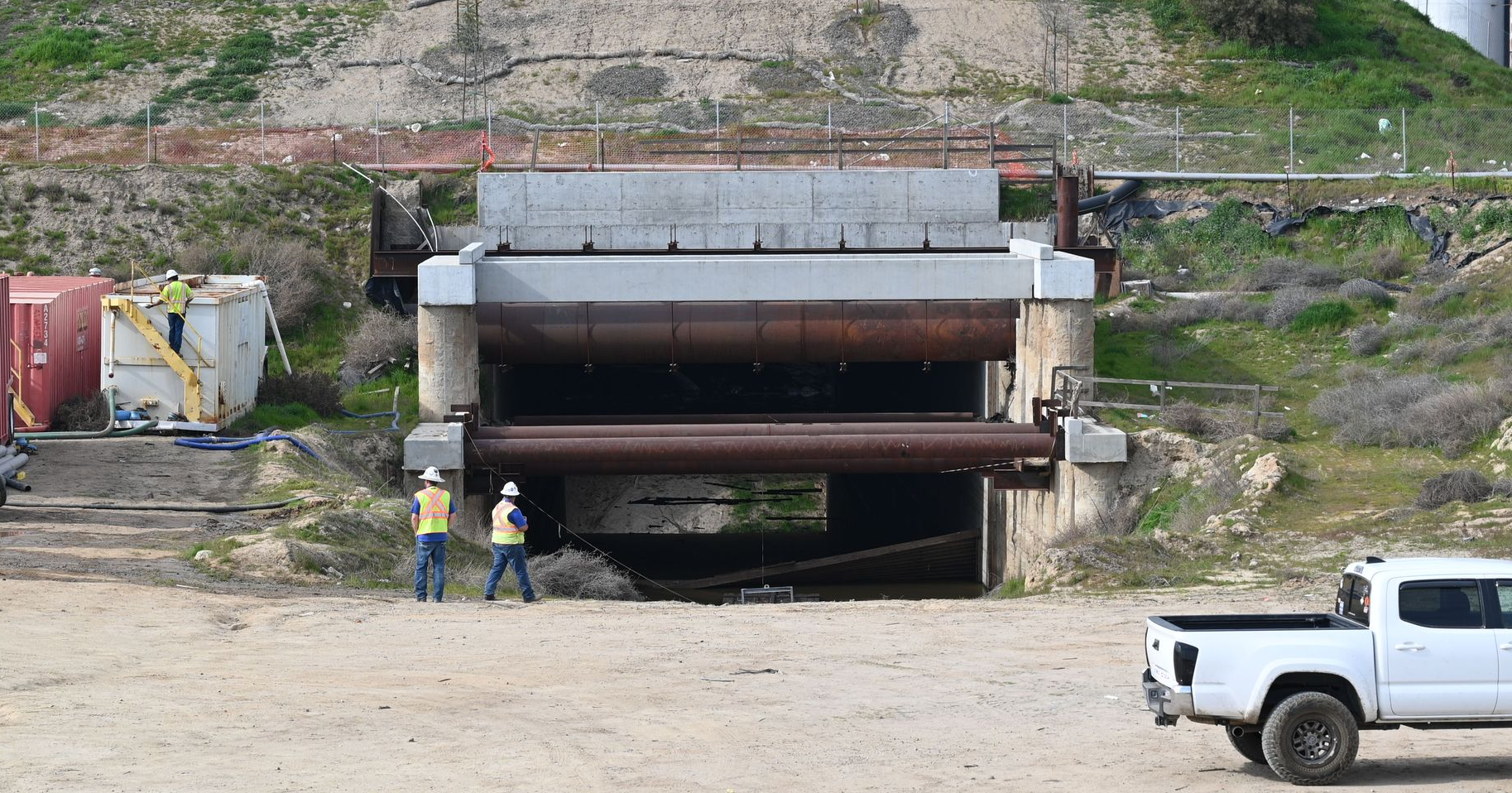CA HSR update September 2025
Another CA HSR project update - September 2025

An editorialized comment from JP
In February 2025, the U.S. Department of Transportation (USDOT) began an audit of the California High Speed Rail project (CA HSR). After the audit, the Federal agency concluded that the State of CA has not complied to their contract agreement and accordingly moved to discontinued their financial obligation to further assist the California project.
The California High-Speed Rail Authority (CHSRA) strongly opposed the USDOT decision, calling the move illegal and politically motivated. CHSRA CEO Ian Choudri stated, "Canceling these grants without cause isn’t just wrong — it’s illegal," emphasizing that the grants were legally binding agreements and that the Authority had met all its obligations. (Reuters) The Authority also previously expressed disagreement with the administration’s conclusions, calling them "misguided and not reflective of the substantial progress made" on the project. (Guardian)
In response to the final decision by the Federal Railroad Administration (FRA): to terminate two federal grant agreements totaling $4 billion in remaining commitments, issued on July 16, 2025; the state of California under Governor Gavin Newsom filed a lawsuit in the U.S. District Court in Sacramento. (Wikipedia) The lawsuit seeks declaratory and injunctive relief, alleging the federal action constitutes "petty, political retribution, motivated by President Trump’s personal animus". The judge ruled to place the funds into an escrow account until the case is legally resolved.
In March 2025, smartcitiesdive.com wrote an article; questioning if the USDOT would kill the CA HSR. In a Feb. 21 statement, the authority said it welcomes the investigation and the opportunity to work with its federal partners. “With multiple independent federal and state audits completed, every dollar is accounted for, and we stand by the progress and impact of this project,” CEO Ian Choudri said.
This was bold statement spoken with authority. That statement would lead people to believe that the HSRA’s CEO has a long history of having gone through several independent, state, and federal audits. He’d been working for the CHSRA six months when he said that in February 2025. He was hired by the CHSRA as CEO in August of 2024.
The author of this writing has been following the HSR project since 1993 when it was a feasibility study comparing maglev technology and steel wheel on rail. Until the 2010s, I attended nearly all of the HSR quarterly public meetings as an audience attendee. My 32 year following provides an in-depth understanding. Is this more experience with the CA HSR project than their 6-month CEO? This author is not a politician and, the viewpoint is from outside looking in. It’s an objective viewpoint, watching the participants of who does what and the corresponding actions.
CA’s current governor (newsom) has no vested interest in the project. It’s likely that his staff has read the original bond measure wording, however, from how the governor talks about the HSR project, it is very likely that he’s never read what the bond measure was about. Or, perhaps he doesn’t remember, the stress of his job is so intense it makes his eyes bloodshot.
CATTCC’s position regarding CA’s HSR project, is to emphasize the importance of integrating a functioning advanced transportation network system and immediately utilize the major transportation corridors throughout the State. By incorporating a modern technology transportation network within these existing light-rail rights-of-ways, it would provide California a convenient modern transit system and lessen the continually growing heavy traffic loads. Traffic stress hasn’t decreased. The continual gas tax increases haven’t improved California’s roads.
Modern transit technology cost less to build and maintain than roads. The hyperbole of the uninformed to maintain transportation’s status-quo equates to ignorance. Or, is that phraseology too harsh?
The ideal scenario would be for the State to work with the private sector as a joint venture project. The State involvement would consist of using the very capable and skilled Caltrans engineers, coordinating with the many advanced transit system technology companies; to create a universally integrated transit system throughout California’s vast territory. This is a solution oriented approach that would comply with cultural demands with modern transit, utilizing the hundreds of miles of unused light-rail rights-of-ways.
The future for CA’s HSR
Here is CATTCC’s analysis of options for California’s High-Speed Rail:
1. Maintain the project and do nothing.
The standard political procedure is to remain the same. This option is to assign the State attorney’s office to file lawsuits against any opposing government agency with the claim that there is nothing wrong. This procedure seeks favorable judges to reclaim funds. This scenario will likely result in the State being obligated to carry out the project’s funding.
This option is defined as the project continuing at a much slower pace. The political rhetoric of media press releases will nurture the message that the project is alive and well; by occasionally releasing stimulating doses of how favorably its tasks are reaching desired milestones.
Simple interpretation: Option One, nothing changes.
2. State sells the project to private entity.
This process of this scenario will extend into the role of California’s next governor. With the appointment of a political “progressive” governor, option one is a consideration. Option Two, for a more centerish governor would be to “save” the CA HSR by selling the project (giving it away for $1) to a private entity. This option gives the project to a private entity, with a promise to continue it as a private project. This would be standard political procedure, including substantial subsidies. There is an engaged train lobby group currently salivating at this option. This option would be fully supported by the government agencies as its standard protocol.
This scenario has the State agreeing to a zero-cost agreement that would enable the entity to finish the first segment and “promise” to build-out the remainder of the project under the same “no EIS” requirement process. And, the “zero-cost” does not include heavy future subsidies.
This is the likely scenario option under the term of California’s next governor, which would elevate the next governor to hero status in the eyes of the blind media.
3. Create PPP to build viable Statewide alternative transportation network.
Creating a Public Private Partnership (PPP) involves both the public sector and the private sector. This scenario outlines an actual transportation solution for California’s technology driven culture and its modern transportation demands. California, like most of Western Society is built upon automobile centric land-use real estate development. Trains were fundamental to the transit-oriented land-use design.
This option calls upon extending the HSR to serve as a main arterial, being part of an integrated new technology transit system. This would indeed place California as the global leader in transportation innovation. It would replace California’s image of having the worst roads, highest taxes, highest gasoline prices, and the blight of having a $15billion failed train project.
However, this approach is in opposition to government’s policies which are against innovation. This transportation solution is contrary to the political standards of engaging established train lobbyists as protocol. And yet, this solution can achieve risk adverse status and gain unanimous voter approval.
This option calls for reformatting the existing segmented HSR infrastructure to a lesser cost, by acquiring a modern transportation technology to be implemented within the corridor. The advanced transit technology system can then be integrated into the hundreds of miles of existing allocated light-rail rights-of-ways throughout each of the local communities along the main artery of the HSR. This can be easily extended throughout the State, and beyond.
How can this receive voter approval? The costs of advanced transit technology is a fraction of the costs of government’s protocol to standard heavy rail.
How does the use of unproven technology comply to the risk adverse nature of political procedure? Through the use of Joint-Venture projects with Public Private Partnerships (PPP). There are several approaches. From the engineering perspective, most Caltrans engineers are capable of being gifted with the ability of common sense. Calculating stress-points of a steel I-beam and load capacity of support beams, is within the parameter of skill qualification for most Caltrans engineering departments. Installation of advanced transit technology system projects require these types of engineering capabilities.
The risk adverse nature of implementing new and advanced transit system technology would be in forming PPPs to allow the government agencies to participate in system development, infrastructure, and system implementation.
Again, the purpose of this type of joint-venture with private entities (plural) is that this process would mix the best available technologies for a combination of several transit technologies in order to attain the highest quality of performance as well as cost savings and quick implementation.
This solution consists of inviting all innovative advanced transit technology companies who desire to participate in building an integrated transit technology, capable of being implemented throughout the State. The absence of risk is the State’s participation of this new technology development.
To ANYONE who would instantly react with ignorant claims that this type of approach is fanciful or would condemn this approach as idiocy, as Director of CATTCC, I can personally deliver several transit technology companies that would be interested in working on such a project. The only ones unwilling to consider such a venture are the established rulers of government train contracts; Czars of the train industry and their engaged contributors; justifiably afraid of losing $hundreds of billions in contracts.
This is a map presented to the voters in the 2008 bond measure.

The map clearly shows over 800 miles of high-speed rail. The current project parameters end with termination points of Merced to Bakersfield. This route is currently served by Amtrak.
The cost of antiquated train technology forecasted in the original 2008 engineering studies, provided for the cost of $75,000,000 per mile: at grade (laying track on the ground with little Earthwork needed). The elevated costs given were $150,000,000 per mile (overpasses and underpasses). Standard tunneling costs in 2008 were $300,000,000 per mile.
New technology transit network systems are one-tenth the costs of heavy antiquated train technology. It’s time for the government to engage modern transportation.
The calendar is well into the 2000s.
Technology is destined to happen to the transportation industry.
Conclusion
The initial concept for CA’s HSR is desperately needed. With that, there is a much needed clarification regarding viable high-speed rail being implemented in a technologically advanced society. First and most vital, steel wheel on rail train technology is 200 years old. If only as a land-use design aspect, trains are totally inappropriate and non-compliant as a mode of transportation in California’s automobile centric land-use design.



